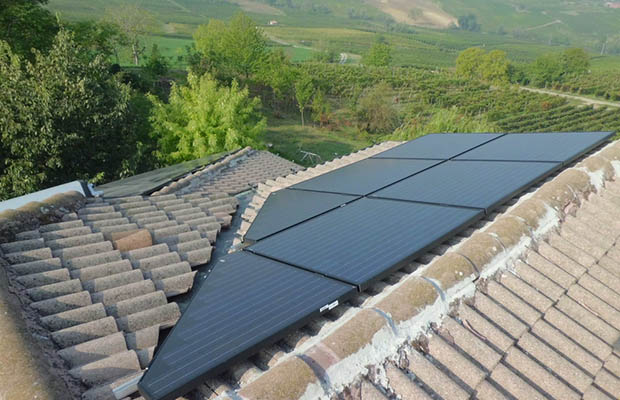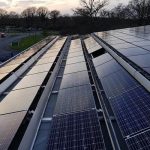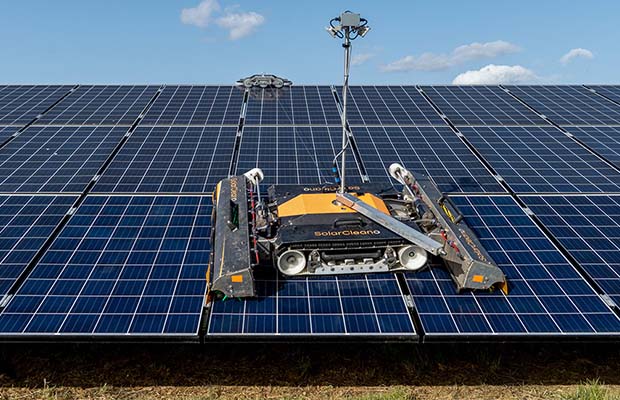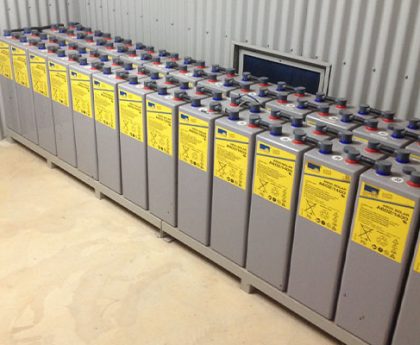There are two types of solar panels available: rectangular and square. Additionally, not all roofs have perfectly square or rectangular shapes. Although they are still relatively uncommon, triangular solar panels do exist! These panels are useful, adaptable, and beautiful for homes with triangular roofs.
With no gaps at the corners or along any edges, triangular solar panels are specifically made to cover roofs. The end result is that you can generate power from all available surface areas without losing any power.
In this article, I outline their advantages and disadvantages, contrast them with conventional solar panels, and offer my assessment of whether they are worthwhile investments.
Continue reading to learn more about these, their creation, and their potential uses.
Table of Contents
- What Is A Triangle Solar Panel?
- The Manufacturing Of Triangular Solar Panels
- Characteristic Of Triangular Solar Panels
- Why Should We Use Triangular Solar Panels?
- Pros And Cons Of Triangular Solar Panels
- Triangular Vs. Rectangular Solar Panels
- Triangular Solar Panels: Are They Worth It?
- Triangular Solar Panels’ Future
- Triangular Solar Panel Options
- How Much Are Solar Panels With Triangles?
What Is A Triangle Solar Panel?
A triangle solar panel is a solar panel that has been specifically created to complement the distinctive angles and shapes on various roofs and to match the shape of triangle roofs. It is an excellent way to cover the portion of the roof that couldn’t be covered by rectangular solar panels.
Rectangular solar panel installation is challenging because there are so many roofs with skylights, chimneys, and other obstructions. To maximize roof usage and associated energy production, triangular solar panels can be installed in these scenarios with almost no gaps.
The idea that triangle solar panels are less effective than rectangular ones is false. Despite their shape, they actually function exactly like any other regular panel.
The only distinction is that they are shaped differently to match your roof, but they operate according to the same principle. With no gaps or protruding edges, they are intended to be aesthetically pleasing and seamlessly blend into the roof.
The Manufacturing Of Triangular Solar Panels
Triangular solar panels are more difficult to construct than rectangular ones, so few manufacturers are motivated to produce them.
Triangular solar panels must be modified in order to use solar cells, which are square with rounded corners. Though they are perfectly suited for the triangle’s center, they must be altered for the sides. To fill these gaps, some manufacturers even use fake cells.
The majority of manufacturers only take on custom orders because they are more difficult to produce. Additionally, you can anticipate paying significantly more than you would for solar panels that are rectangular.
Characteristic Of Triangular Solar Panels
- Triangular solar panels are created by combining square and triangular panels.
- Solar panels with triangular shapes look good.
- Due to space limitations, triangular solar panels can fit in areas that were previously unusable.
- Triangular solar panels can be quickly installed and are simple to join with rectangular ones.
Why Should We Use Triangular Solar Panels?
Aesthetics
Triangular roofs complement triangular solar panels better. If aesthetics are important to you, you’ll be glad to know that these panels meld perfectly with a triangular roof design.
Triangular Roofs
Utilizing every square inch of their roof space is the main reason people choose triangular solar panels. Not all roofs are square or rectangular, so installing solar panels with a rectangular shape on a triangular roof will result in unused gaps.
You can harness the full potential of solar energy by using triangular solar panels, which are more effective on triangular roofs.
Pros And Cons Of Triangular Solar Panels
The Advantages
Better uses of roof space
Triangular solar panels can cover bare spots on roofs that conventional rectangular panels can’t. This makes it possible to generate more solar energy overall.
They are aesthetically pleasing
Solar panels made of triangles are intended to be installed on roofs without leaving any gaps or protruding edges. They continue to maintain the aesthetic of your rooftop while functioning as additional units.
The Disadvantages
Harder to manufacture
Manufacturing triangular solar panels are more challenging than producing rectangular ones. because the geometrical properties of the triangular shape make the production of it more difficult.
Fewer manufacturers
There are currently very few businesses that make triangular solar panels. Finding the products and evaluating their availability, effectiveness, etc. are made challenging by this.
More expensive
Solar panels in the shape of triangles cost more than those in the form of rectangles. This is so they can be manufactured using different methods since they aren’t standard-sized products. It costs more to produce because it needs specialized equipment and takes more time.
Fewer warranties
Compared to their rectangular counterparts, triangular solar panel products lack long-term warranty data. The triangular solar panels don’t have any trustworthy third-party warranty reports available.
Triangular Vs. Rectangular Solar Panels
Both square and rectangular shapes are common for solar panels. Because polycrystalline and monocrystalline solar cells are squared off from a silicon ingot, manufacturers find it easier to produce these shapes. Squares are simpler to cut out of silicon sheets because of their effective shape.
There is a misconception that triangular solar panels are less effective because rectangular solar panels make the most sense in terms of how space is utilized on the panel. In actuality, a solar panel’s efficiency is determined by the kind of solar cell it is made of, not by its shape.
You can cover every open space on your roof if you use triangular solar panels on a triangular roof. The empty cells used to complete the triangle will be made up for, and you’ll discover that the triangular panels function exactly like rectangular ones.
Triangular Solar Panels: Are They Worth It?
The cost of these solar panels might not be justified, even if your roof is triangular. Triangular solar panels are the best, but they’re usually not cheap!
You can choose rectangular solar panels if you don’t want to completely cover your roof or shape it into a triangle. No more energy will be generated by triangular panels, and no money will be saved.
Triangular Solar Panels’ Future
Triangular solar panels are a good option if you have the money and want to contribute to the advancement of technology.
Currently, there isn’t much of a market for triangular solar panels, and some nations don’t even produce them. Their high price and general lack of interest are a result of this.
Solar panel manufacturers will feel the pressure once more customers begin requesting triangular options. They won’t have any other choice but to figure out how to manufacture triangular solar panels at a reasonable price for the market.
Triangular Solar Panel Options
Polycrystalline or monocrystalline solar cells can be used to make triangular solar panels.
Polycrystalline
Triangular solar panels made with polycrystalline solar cells may be a little less expensive because of their low cost. The only drawback is that polycrystalline solar cells don’t work well in hot or low light conditions. If you choose these cells, you must be certain that your area is suitable for them.
Monocrystalline
The efficiency of monocrystalline solar cells is higher than that of polycrystalline ones. They are thought to produce 15 to 20% more energy per square foot! With a 25-year lifespan, monocrystalline solar cells are also effective in sweltering conditions.
How Much Are Solar Panels With Triangles?
There are not many manufacturers of triangular solar panels, which makes them different from standard solar panels. There are still no triangular solar panel products on Amazon as of late 2021.
This implies that it is challenging to find triangular solar panel products and compare them for things like price, efficiency, etc.
Triangular solar panel producers still exist, and their goods can be found on the market.
Triangle modules are made by the Italian business Trienergia in both anodized red and black colors.
Their monocrystalline photovoltaic module, which has 21 cells M4 (162,75 x 162,75mm), works best when combined with their rectangular modules. For 12 years, the company offers a 90% performance warranty, and for 30 years, an 82% performance warranty. Depending on the online store where you buy them, 100 Watt models cost around $150.





